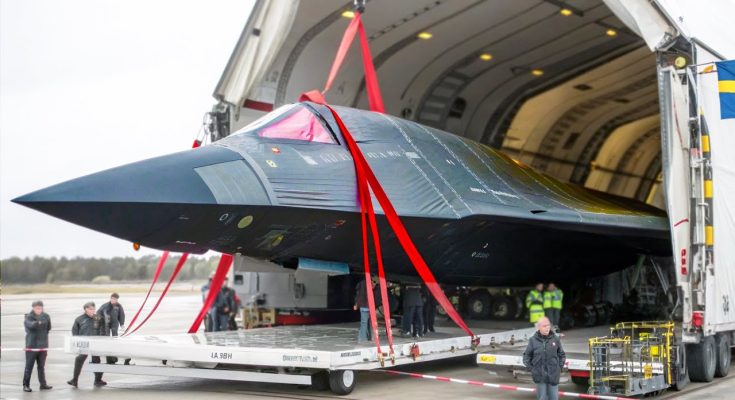In a stunning move that has shocked NATO and the global defense community, Sweden has unveiled its new sixth-generation fighter jet. This announcement has sent shockwaves through NATO allies, raising eyebrows about Sweden’s rapid advancements in military aviation and its implications for future air combat. While detailed specifications of the aircraft remain under wraps, the very reveal itself demonstrates Sweden’s growing military prowess and commitment to remaining at the forefront of cutting-edge defense technologies.
Sweden’s Push for Next-Generation Combat Aircraft
Sweden has long been known for its advanced aerospace capabilities, particularly through the development of the Saab JAS 39 Gripen, a multi-role fighter that has become a staple of the Swedish Air Force and several NATO partners. The unveiling of a sixth-generation fighter jet signals a clear intent to build on this legacy and push the envelope of what is possible in aerial combat.
The new Swedish fighter jet, still under development, is expected to be a game-changer in modern warfare. The 6th generation aircraft is designed with several key features, including enhanced stealth, hypersonic weaponry, and artificial intelligence (AI) integration. These advancements are aimed at allowing the fighter to outperform current fifth-generation jets like the F-35 Lightning II and F-22 Raptor in virtually every aspect of air combat.
Key Features of Sweden’s 6th-Gen Fighter
While full details of the jet remain undisclosed, experts speculate that the aircraft will include several cutting-edge technologies:
- Stealth and Advanced Radar Evasion: The new Swedish fighter is expected to feature enhanced stealth capabilities, ensuring that it can operate effectively in highly contested environments where traditional radar systems might fail to detect it. Its design will likely focus on reducing its radar cross-section, allowing it to infiltrate enemy airspace undetected.
- Artificial Intelligence and Autonomous Operations: AI integration will play a central role in the jet’s capabilities. This could include autonomous combat operations, real-time data analysis, and the coordination of unmanned drones during missions. The aircraft’s ability to make decisions based on real-time intelligence would significantly enhance its effectiveness in complex combat scenarios.
- Hypersonic Weapons: In line with the evolution of global military technology, the Swedish fighter jet is expected to be compatible with hypersonic weapons, capable of reaching speeds greater than five times the speed of sound. This would allow the aircraft to engage high-value targets from long distances with unparalleled speed and accuracy.
- Unmanned Aircraft Collaboration: Another likely feature is the ability to work alongside unmanned aerial vehicles (UAVs), creating a more flexible and networked force. This “manned-unmanned teaming” concept is rapidly becoming the standard for future air forces, allowing for greater versatility and mission success.
Shocking NATO and Global Defense Powers
Sweden’s introduction of a sixth-generation fighter jet has certainly shocked NATO allies and the wider global defense community. Historically, NATO has been led by air forces from the United States, the United Kingdom, and other major powers. Sweden’s ability to develop such a sophisticated aircraft challenges the dominance of traditional powers, particularly in Europe, and adds a new dimension to NATO’s air superiority.
This move also places pressure on NATO’s other members to accelerate their own development of next-gen aircraft. The competition in the sixth-generation fighter race, already heating up between the U.S., China, and Russia, now includes Sweden—signaling the arrival of a new player in this high-stakes arena. NATO nations, particularly those in the Scandinavian region, are expected to closely monitor Sweden’s progress, as its new fighter could significantly impact the alliance’s future air combat strategies.
Strategic Implications for Sweden and NATO
Sweden’s new sixth-generation fighter jet could enhance the nation’s defense capabilities, enabling it to defend its airspace against increasingly sophisticated threats. As a non-NATO member, Sweden’s growing military prowess could also lead to stronger defense partnerships with NATO countries. The aircraft’s technological advancements, particularly in AI, hypersonic weapons, and stealth, could greatly benefit NATO’s collective defense strategy.
In conclusion, Sweden’s development of a sixth-generation fighter jet has raised the bar for air combat and surprised the global defense community, particularly NATO. While details remain scarce, the aircraft’s capabilities promise to be a game-changer for Sweden and its allies. As the race for sixth-generation technology accelerates, Sweden’s new fighter will undoubtedly play a crucial role in shaping the future of global aerial warfare.



